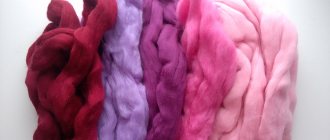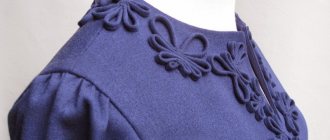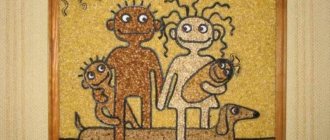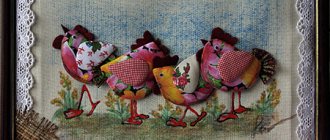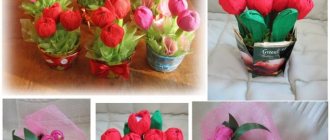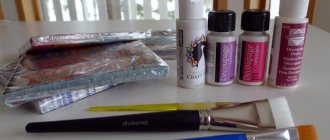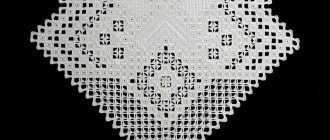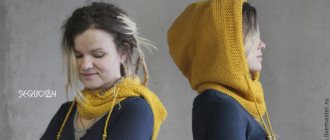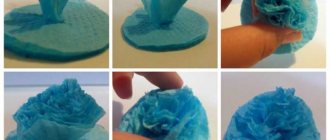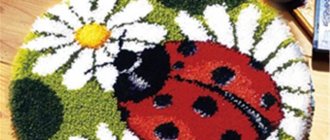What tools and materials will you need to create a wonderful picture from wool?
What is considered wool painting? This is a layer-by-layer application of fibrous material, resulting in an image of multi-colored strands. Work in the technique of drawing with wool is carried out in stages, starting from the background and ending with the nuances of the foreground.
Produces full-color three-dimensional images
The fibers are not fastened together in any way, as in the felting technique.
We see a multi-layered pattern that is located between the glass and the backdrop
For the backdrop, fiberboard (hardboard) with a fabric base is suitable. We sell ready-made clip frames, usually used for photos and including glass, hardboard and clamps.
Wool artists need a number of materials and tools:
- selection of a subject: depending on the theme of the future drawing, choose the colors of unspun wool;
- convenient small scissors;
- ordinary tweezers;
- glass, backdrop or ready-made clip frame;
- non-woven or fleecy fabric on a backing.
For a painting to be impressive, it must be framed
Wool is very docile and does not require special skill, as it might seem when looking at beautiful works. Skills in handling fibers are developed very quickly. Wool is purchased in the form of ribbons or carding.
A ribbon, or top, is nothing more than already combed wool, with all the fibers located in one direction. Carding can be described as wool wool: the fibers bend in any direction, resembling a fleece in appearance.
In addition to the desire to create and the above-mentioned tools, you need to allocate a little time for your creativity
How can you work with wool?
There are three main methods for drawing with strands: pulling, plucking and cutting.
Pull
It is most convenient to work with combed ribbon: strands can be easily pulled out of it. Moreover, the thickness of the strands will be what the author needs: thin, not covering the previous layers, dense, capable of covering the background.
The ribbon is clamped in the left hand, and the strand of the desired thickness is easily pulled out with the right hand.
Important! You cannot strain your hands, everything should happen as if by itself - the process does not become torture, it is real pleasure!
Pinching
By pinching, small lumps are created that resemble a cobweb. The fibers bend in different directions. Small lumps help create smooth transitions between colors and shades.
If you use this method against a background, you get watercolor tones.
With your left hand (for right-handed people) take the tape, forming a fold. The fingers of the right hand pinch the fibers at the bend. Movements should be small and frequent. The result is fluffy clumps of different densities, which means they will each overlap the layers in their own way.
Important! The lumps should be uniform, don’t worry if the loops come out the first time - just get used to it a little, and it will work!
Advice! If you have a carded card of the desired color, then the pinching method will not be useful.
Trimming
Scissors are needed for the cutting method: the strands are cut into a cloth with a pattern above the place where the fluff of a certain size and shape is required. The cut can be positioned with your hands and tweezers.
Additional nuances of work
Beauty in artistic designs comes from mixing colors: wool also mixes beautifully. To do this, take 2-3 different colors and form them into a strand. Already with this strand they work with any of the listed methods or their combination.
Any painting is a combination of basic techniques of working with wool fibers. As a result, we see a number of layers, base, fiberboard and glass
Types of wool felting
How and why does felting happen? It turns out the principle is the same as with our hair. Hair consists of scales that, when closed, look healthy and smooth. But if the scales are open, tangles can form and fall off. However, this property is an advantage for art.
Felt paintings
[Show slideshow]
Dry felting
Dry felting of wool paintings is done using a needle. It should be quite thin, have small notches and resemble an L shape. With the help of such a tool, the fibers are easily tangled, and the process becomes similar to modeling from plasticine.
Poppies made by laying out colored sheep's wool in layers
Necessary materials:
- sheep's wool;
- special needle;
- thimble (required).
Everything you need for dry felting
Felting technique:
- We separate a small lump from the wool and tangle the fibers between our palms. Roll it into a tight rope.
- We stick the needle deeply into the lump and first of all we start compacting from the inside (this is important). We gradually move towards the outer walls, compacting and felting. This will level the surface.
- To make the figure denser, use a thinner needle. If during the felting process the figure does not change its appearance, shape and density, then felting should be stopped. To create a bulge in a certain area, lay down this area for a short amount of time.
Dry felted wool painting
Wet felting painting
Wet felting from wool is a classic method. With the help of soapy water and friction in different directions, the fibers fall tightly together.
A painting made of wool looks voluminous and unusual
For this technique you will need:
- unspun wool;
- film (bubble);
- bamboo napkin;
- felting needle;
- thimble;
- soap;
- net;
- warm water
Everything you need for felting
Technique:
- We separate thin shreds of 8 cm long from the unspun wool. We lay out the shreds on bubble wrap, slightly layering them on top of each other. Thus we lay out 3-4 layers.
- On the penultimate layer we lay out the drawing. It may consist of woolen threads, scraps of wool and other suitable materials.
- Spray the workpiece with soapy water and cover it with a net.
- We iron the wool in all directions to compact the material.
- Place everything on a bamboo napkin and roll it tightly like sushi. Next, wrap it in a towel and roll it around the table about 100 times.
- We unfold the structure and roll it back, turning it 90 degrees.
- When felting, the canvas will shrink by 20-40%. When everything is ready, rinse in warm water and dry.
For the wet technique, you will need a felting needle. This is a special metal needle with a wooden handle. It is needed in order to imprint the design onto the canvas. The needle has multidirectional notches that can damage the skin if used carelessly.
The splendor of wet felting paintings
How to make a picture out of wool: what we can recommend for beginners
The first time, and several subsequent times, you need to be patient: it would be better to master the process gradually, and not try to complete everything in one sitting. In any case, attention will be strained and fatigue will take its toll, which will lead to negligence and low performance. We remember: pleasure from work should come first!
Glass is often used on a painting
Since the result will be observed precisely under glass, the result can only be adequately assessed in glass. It will reveal flaws and shortcomings that will need to be corrected immediately.
If you do not apply glass, you may find that those parts of the painting that seemed thin suddenly turned out to be excessively large.
We remember that the ratio of dark and light is responsible for the visual volume, so we try to make the drawing full-color
We don’t skimp on creating highlights on the flower vase using white and don’t forget to add dark tones where the shadow should lie.
What to do if something goes wrong? We remove the layers in reverse order and redo the mistake - this will be an irreplaceable experience, there’s no point in getting upset.
Preparing the basis
You need to lay a proportionate piece of non-woven or flannel on the fiberboard. Since the process consists of layer-by-layer overlay from the background to the foreground, we do not neglect the very first layer. Sliver fibers (undyed, unbleached wool) are laid in a fairly dense layer.
Selecting the wool of the desired type and color
The first works should not be complicated - let it be a simple and accessible plot. Colors are selected in accordance with the chosen plot:
- the warm group is ideal for autumn landscapes, skin color, flowers;
- cold group is suitable for winter landscapes, marine themes, night views;
- mixed shades of each group are used at your own discretion;
- white color creates highlights, emphasizes individual elements, and is used as a basis for snowy landscapes;
- black color is responsible not only for dark elements, but also for creating depth and shadows.
Making the background
To draw a background, you need to sequentially lay several layers of strands by pulling the fibers.
Someone is an ardent opponent of the sliver and immediately starts working with a colored background - this is the personal choice of each master. The background is rarely one color; it is usually a combination of several layers that differ from each other in thickness and color. At this stage, there is also no need to rush anywhere; you need to carefully select shades.
Laying out the drawing and framing the painting in a frame under glass
The drawing is laid out on the finished background. Start with larger elements or background objects. At this stage, all methods or their combinations are actively used.
At the end of the work, it is covered with glass, the excess wool is trimmed off along the edge, and all that remains is to insert everything into the baguette.
Painting techniques for beginners: how to make flowers and landscapes
To better understand the essence of the technique, it is recommended to pay attention to master classes for beginners.
The simplest ideas for work would be images of flowers or landscapes.
In order not to complicate the search for a special canvas, you can use a regular picture frame, after gluing onto it a hard sheet of fiberboard wrapped in white paper.
Note! To work you will need unspun wool in skeins, non-woven sheets, scissors, tweezers and glass for the frame. The finished work will have an A4 sheet size of 30x21 centimeters.
You can create a project yourself by selecting the necessary image from the Internet.
Let's look at the basics of wool painting techniques for beginners: you can draw lilies, roses, lilacs or wildflowers:
| Stage | Description |
| Filling the background | Working with wool always starts from the background, only then a layer of pattern will be applied to the finished background. By tearing small fibers from a skein of wool, it is necessary to form a background. It is recommended to overlay colors from light to dark |
| Laying out leaves | To lay out the leaves beautifully, you need to gradually tear off the long fibers from the skein, twisting them at the ends. This will make the leaves look more natural. To make a stem, you need to carefully twist long strips and place them on the canvas in the center. A similar method can be used to create tree trunks and branches in landscapes. |
| Formation of petals | From rounded pieces of wool you need to create the required number of petals. It is also important to convey the color of the flower core - for this you can use black wool |
| Completion | At the final stage, glass is applied to the work, checking for all errors. If necessary, some of the work is corrected |
Master classes on making paintings from wool
General recommendations have been received, it’s time to see how masters create their works and learn new things from them.
Painting "Flowers in the meadow"
The author demonstrates the process of creating a colorful and delicate painting. If you want to start somewhere, why not with beautiful flowers?
| Illustration | Description of action |
| You will need enough wool colors: dark brown, blue, white, yellow, light green, brown, red, burgundy, pink. It will be good if there are similar shades of warm colors. In addition to strands of combed tape, standard tools are used in the work. | |
| Don’t forget about selecting a frame according to the fiberboard or hardboard format. | |
| We lay out the first layer either in white or in sliver. We slowly pull out the strands and arrange them as we please, without being afraid to run over the edge of the canvas. | |
| The blue base will create depth to the picture. We also don’t need to lay out everything at once in a dense layer, otherwise the effect will not be the same. | |
| On top of the blue we pull out strands of dark brown in the center, concentrating on the future meadow. | |
| We are not afraid to highlight the depth and shadows on the lawn with color. | |
| The next fairly dense layer is a dark red or even burgundy shade. | |
| Now we work with the edges of the picture: dark accents are placed, take light orange and light brown colors and apply them radially or vertically along the edges. | |
| We take yellow, orange and peach colors: we need to mix them like paints using the pulling method. Each time we pull out a few strands and add them to the bun again. This way we will thoroughly mix the shades - you can continue painting. | |
| We pull a very thin strand from the new bun, twisting it at the same time. We lay rows over the picture and cut them with scissors. You can use tweezers - this is how we create individual twigs and straws in the meadow. | |
| Pink strands will serve as flower petals. It would be great if you also mixed a few warm shades. We cut the strands, forming the length of the petals. Let's make several flowers this way. We form the middle from yellow using the pinching method. | |
| The finished picture is trimmed around the edges, removing excess wool, and hidden under glass. |
Painting for beginners on paper, not fabric
An interesting option for creating a cat’s face will appeal to many. The creative author used watercolor paper instead of a fabric base, which itself is moderately rough.
| Illustration | Description of action |
| We stock combed ribbons of white, cream, blue (or any other for the background), several shades of green, peach, brown and dark brown, black. We purchase a frame of the required size, and it will need the same proportionate sheet of paper. | |
| Draw a portrait of a cat on paper. We place the paper on the base, having first removed the frame from it. | |
| First of all, we lay out the background, using the stretching method. | |
| Take a dark color and pull out a small strand. We cut the fiber so that its length matches the length of the eyelet side. | |
| Lay out the edges of the ears one by one. | |
| Using lighter shades of brown, we gradually fill the space inside the ears. | |
| We try on the appropriate length of the cat's chin, and take suitable light hair for it. | |
| Having cut the strands, lay them out radially from the muzzle. | |
| To add volume to the design, layers of lighter sand and brown shades should be placed on the chin. | |
| Since the ears were laid out first, now you can beautifully and naturally place the hairs on top of them. | |
| In the center, we begin by stretching to create the cat’s face. | |
| We lay out the cheeks radially from the nose, using different shades of wool. | |
| Eyes are created by pinching. The eyes are laid out with fibers of different shades of green; on top you need to put the black color of the pupil, not forgetting about the white highlight. |
When the work is completed, you can hide it under the frame. We admire our creativity and come up with different interesting subjects for wool painting!
Dry felting basics
For dry felting you will need:
- wool;
- felting needles;
- backing board or brush;
- wool-like fabric for a brush.
What is made from wool? There are a lot of ideas! If you decide to felt a small thing, then take wool for the base; if the thing is large enough, then you can take a padding polyester, crumpled and wrapped in fabric.
- Place a piece of wool on the brush and pierce it with a thick triangular needle. Hold it at a right angle so that the punctures are even and deep. Don't forget to turn the lump. In this case, the wool inside is matted quickly, tightly and evenly.
- Continue until you have a ball in your hands that is even on all sides. If it does not deform when pressed, then everything is done correctly.
- Now take a medium needle and start adding wool in small strands. Make the punctures shallow and as close to each other as possible. The more punctures, the smoother the surface will be.
- From time to time, tap the workpiece and your finger on the table. As soon as the sound becomes the same, the workpiece has been felted to the desired density.
- Each part of the product has its own blank. Then the parts are pressed against each other. At the junction, a few free fibers are left on one of the workpieces. Thread them with a needle into another part. Place a small thin strand on top so that it covers both pieces, and gently press with a needle.
- Now you can start laying out the top layer; here you can take thin combed wool. Use frequent thin, shallow punctures to tangle the fibers, achieving the formation of a smooth, dense surface.
- Finally, attach eyes, braid and other decorative elements.
Step-by-step master class on dry wool felting for beginners.
Helpful Tips:
- Do not bunch the wool too tightly, otherwise it will begin to tear;
- For toning, you can take dry pastel or grated lead of colored pencils;
- If the product involves a combination of wet and dry methods, then before each next step, let the workpiece dry completely;
- Movable elements are best made on the basis of a wire frame.
